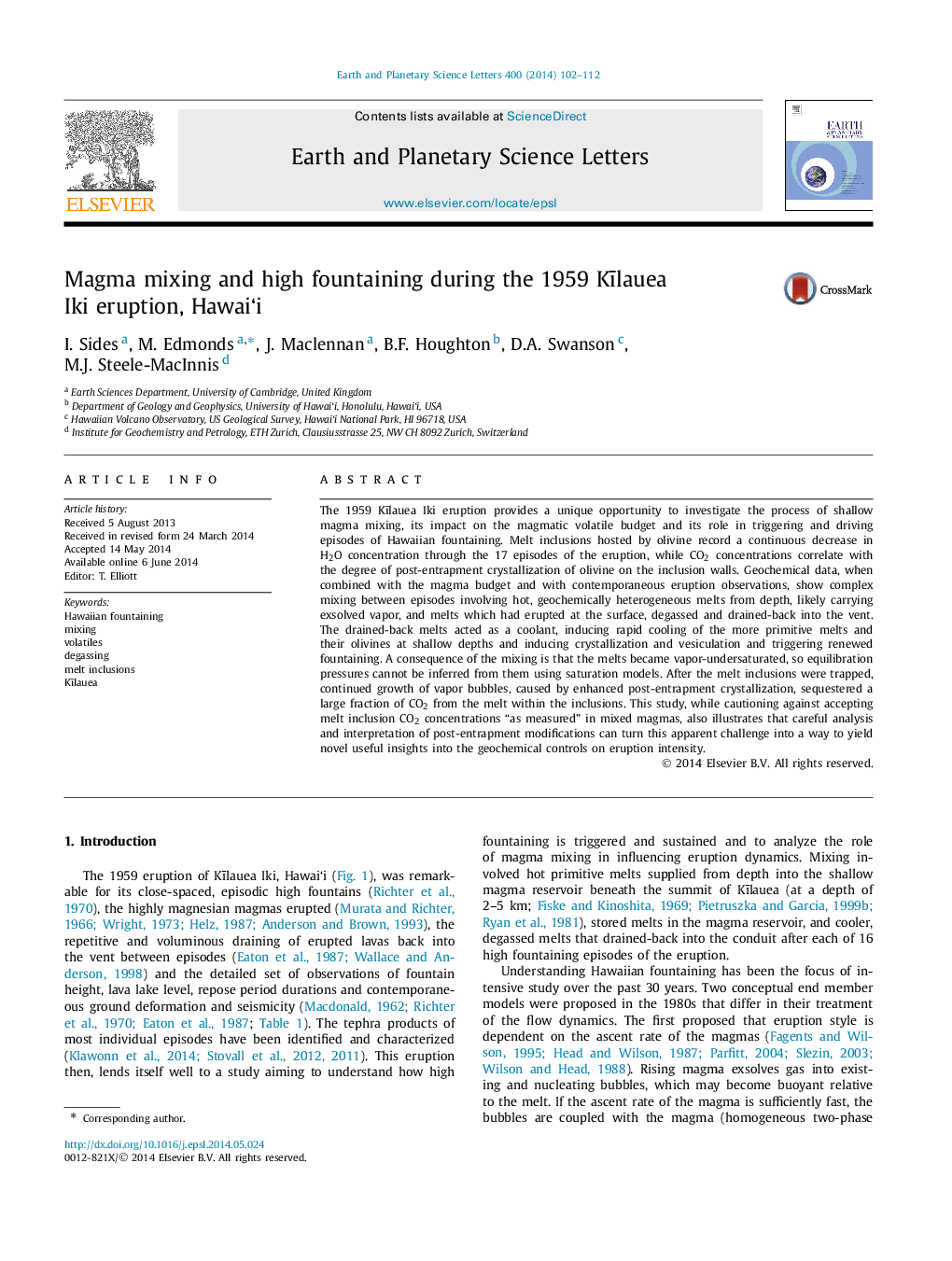| کد مقاله | کد نشریه | سال انتشار | مقاله انگلیسی | نسخه تمام متن |
|---|---|---|---|---|
| 6428757 | 1634756 | 2014 | 11 صفحه PDF | دانلود رایگان |

- Melt inclusion geochemistry records complex syn-eruptive mixing.
- Drained back lava acted as a coolant, triggering crystallisation and vesiculation.
- Magmas became vapor-undersaturated upon mixing with drained back lavas.
- CO2 partitioned into a vapor bubble in the inclusions during cooling and cooling.
- Magma mixing may have triggered fountaining.
The 1959 KÄ«lauea Iki eruption provides a unique opportunity to investigate the process of shallow magma mixing, its impact on the magmatic volatile budget and its role in triggering and driving episodes of Hawaiian fountaining. Melt inclusions hosted by olivine record a continuous decrease in H2O concentration through the 17 episodes of the eruption, while CO2 concentrations correlate with the degree of post-entrapment crystallization of olivine on the inclusion walls. Geochemical data, when combined with the magma budget and with contemporaneous eruption observations, show complex mixing between episodes involving hot, geochemically heterogeneous melts from depth, likely carrying exsolved vapor, and melts which had erupted at the surface, degassed and drained-back into the vent. The drained-back melts acted as a coolant, inducing rapid cooling of the more primitive melts and their olivines at shallow depths and inducing crystallization and vesiculation and triggering renewed fountaining. A consequence of the mixing is that the melts became vapor-undersaturated, so equilibration pressures cannot be inferred from them using saturation models. After the melt inclusions were trapped, continued growth of vapor bubbles, caused by enhanced post-entrapment crystallization, sequestered a large fraction of CO2 from the melt within the inclusions. This study, while cautioning against accepting melt inclusion CO2 concentrations “as measured” in mixed magmas, also illustrates that careful analysis and interpretation of post-entrapment modifications can turn this apparent challenge into a way to yield novel useful insights into the geochemical controls on eruption intensity.
Journal: Earth and Planetary Science Letters - Volume 400, 15 August 2014, Pages 102-112